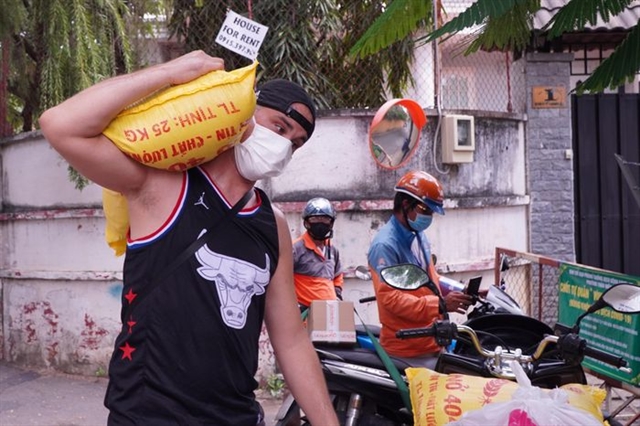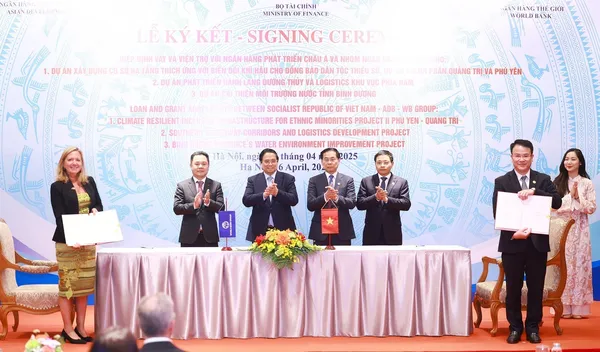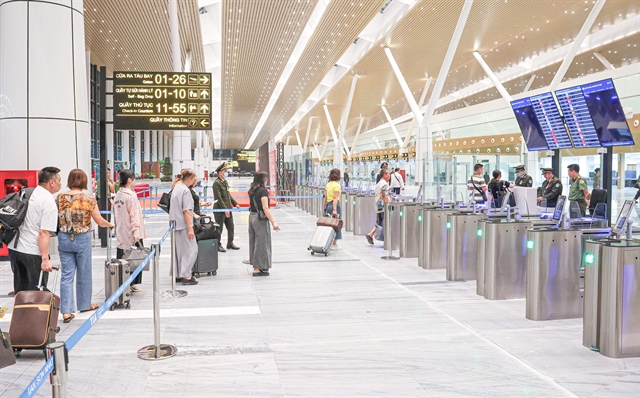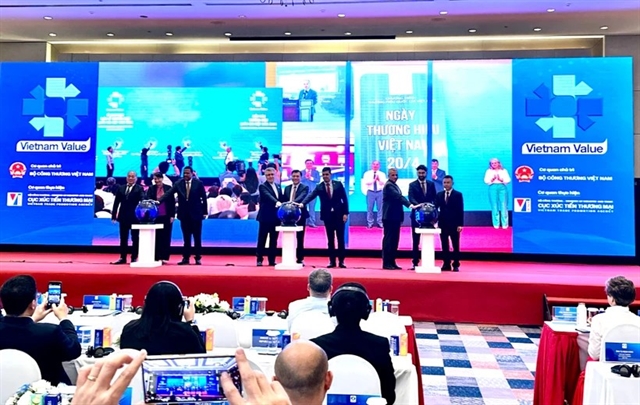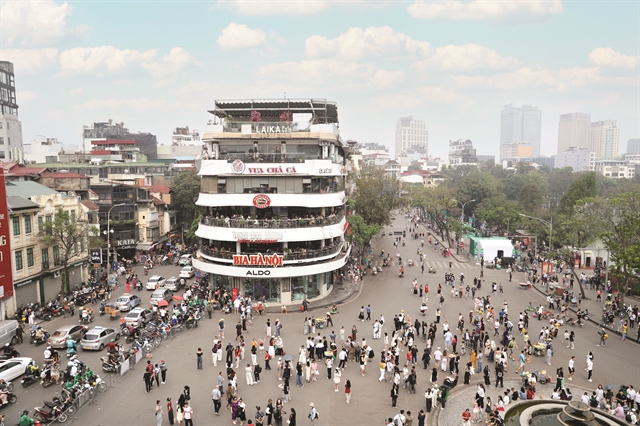 Sunday/Weekend
Sunday/Weekend
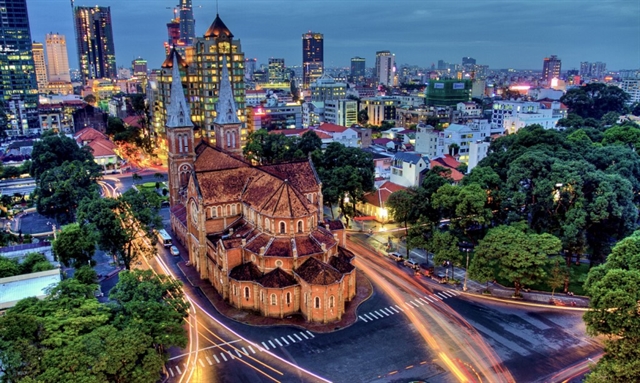
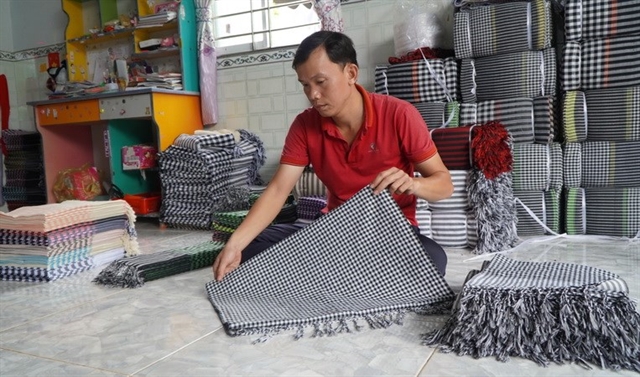 |
| ICONIC FABRIC: Phạm Thanh An, a resident of Long Khánh A Commune, folds check scarves to prepare for delivery. VNA/VNS Photo Nhựt An |
by Nhựt An
Tourists to southwestern Việt Nam can easily recognise the check scarves worn around the necks or wrapped around the heads, or draped around the shoulders, of the locals both men and women.
The scarves have been closely associated with the working and daily lives of the local people for hundreds of years and are a cultural symbol of the Mekong Delta region.
Most check scarves in the region are woven by workers, in Long Khánh A Commune, Hồng Ngự District in Đồng Tháp Province, who have practised their craft for generations.
They could not have been prouder of their traditional craft than when it was recognised as a National Intangible Cultural Heritage by the Ministry of Culture, Sports and Tourism.
Long Khanh A is located on an islet in the middle of the Tiền River. According to elderly locals, the arts of growing strawberries, raising silkworms, and weaving silk cloth appeared and flourished on the islet in the early 20th century.
Over time, the traditional craft of weaving check fabric for making scarves in the commune has suffered from fierce competition with imported industrial fabric that has the advantages of low costs and diverse colours and patterns.
A number of silk weavers gradually shifted to other professions that suited the needs of society, while others still remain loyal to the traditional crafts and even have revived its heyday.
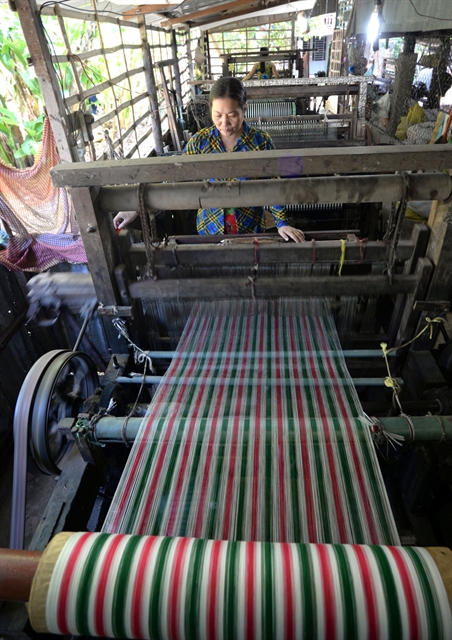 |
| LOOMING DEADLINE: A local woman is seen working by a loom weaving colourful check cloth. Photo thamhiemmekong.com |
Through many ups and downs, the traditional products here have gradually become known wide and far, creating a distinct cultural identity and providing a stable source of income for the locals.
Nguyễn Thị Mèn, 63, a local artisan with over 40-year experience, the indispensable tools of weaving check cloth include loom and yarn.
To make a complete product, the weaver goes through many stages. The initial products were entirely handmade check cloth, usually of two colours -- black and white or brown and white.
A finished check scarf has a rectangular shape and is about 120cm long and 40-50cm wide. Despite its simplicity, the cotton scarf has many uses, such as wiping sweat, tying around the waist, holding food, and as a sling for children. Interestingly, the longer it is used, the softer the fabric becomes and the better it absorbs water.
From hand to power looms
A significant milestone for the weaving village came in 1998 when the national power grid reached the islet, enabling the locals to switch from hand looms to power ones.
Currently, 80 per cent of the check cloth production is done by machines, improving productivity, increasing product value and enhancing competitiveness.
However, some traditional looms are still preserved in the commune for tourism and experiential activities.
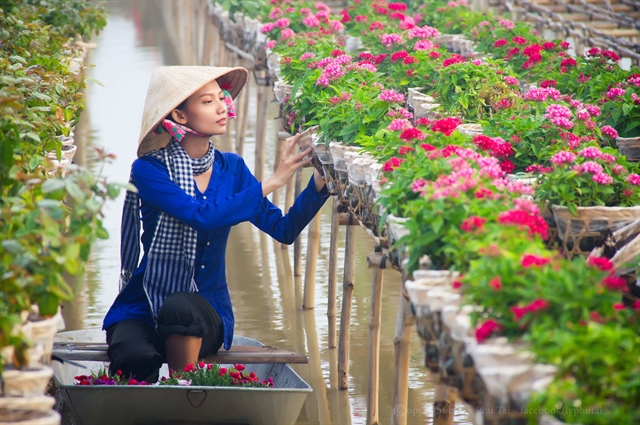 |
| REGIONAL NECESSITY: Check scarf is an indispensable part of the people's daily life in the Mekong Delta. Photo thamhiemmekong.com |
The commune now has 60 households engaged in the craft, with 142 weaving looms, providing regular jobs for over 300 local workers. Depending on the quantity of products, each weaver can earn from VNĐ200,000 to 250,000 per day (US$8.50-10.70) on average.
Every year, the village produces more than 5 million check scarves that are distributed widely in HCM City, the Mekong Delta provinces and as far as Cambodia.
The selling price ranges from VNĐ50,000-160,000, depending on its type, colour, and size.
As an essential part of local life and a symbol of the industriousness of the villagers, the check fabric was recognised by the Provincial People's Committee (Provincial Administration) as an iconic cottage industrial product of the province in 2014. Recently, the check fabric weaving craft has been recognised as a National Intangible Cultural Heritage by the Ministry of Culture, Sports and Tourism.
“The weaving craft provided my family with a stable income and supported my children's education,” said Dương Văn Lực who has pursued the craft for over 40 years.
“When it was honoured as a national intangible cultural heritage, I was very excited and proud. I hope that the weaving village will continue to develop even more. I'm getting old, so I will pass on the craft of our locality to my children and grandchildren.”
Innovation
Faced with challenges to the survival of a 100-year-old weaving village, many artisans here have improved and innovated their products by combining traditional and modern elements to create distinctive products.
Not only in black, brown and white, the rustic check scarves are now diversified in terms of colours and patterns. They are even embroidered with symbolic images of Đồng Tháp Province such as lotus flowers or red-headed cranes.
Besides traditional scarves, the weavers have also diversified the use of check cloth to make shirts, dresses, handbags, hats or neck ties. Assorted products made with check cloth have also become typical tourism gifts from the locality.
According to Trương Thị Thu Thạnh, vice chairwoman of the People's Committee of Long Khánh A Commune, with the support of the local authorities to access preferential loan sources, many households have invested in weaving machines to increase productivity and diversify their products, thus improving their income in recent years.
“To preserve and develop the weaving craft, the commune authorities encourage household businesses to participate in fairs and exhibitions to promote their products and the village's heritage. They will receive better conditions to invest in modern equipment and technology to produce new products,” she said.
“The local authorities will also pay attention to promoting trade, expanding markets, and finding outlets for the fabric, while building local brands, and organising conferences to sign new contracts and supporting households in accessing preferential loans.
“The development of the weaving village will be associated with tourist activities such as visiting workshops, local ancient houses and orchards.” VNS


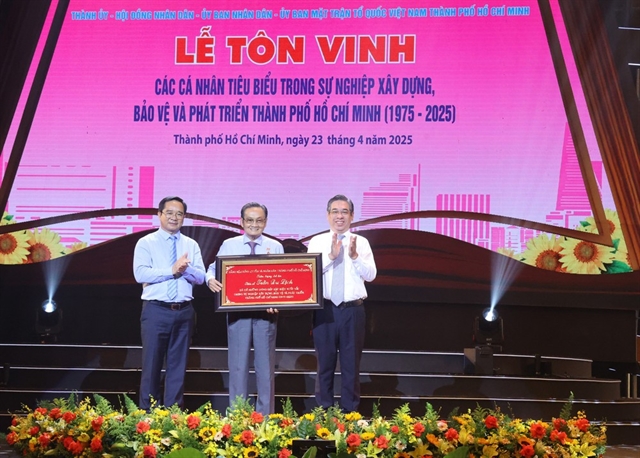
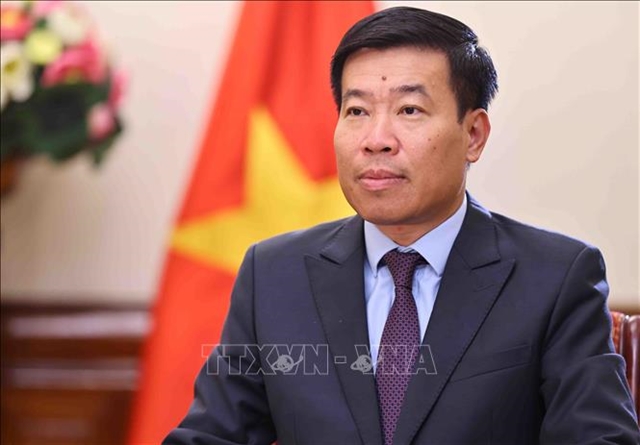
.jpg)
